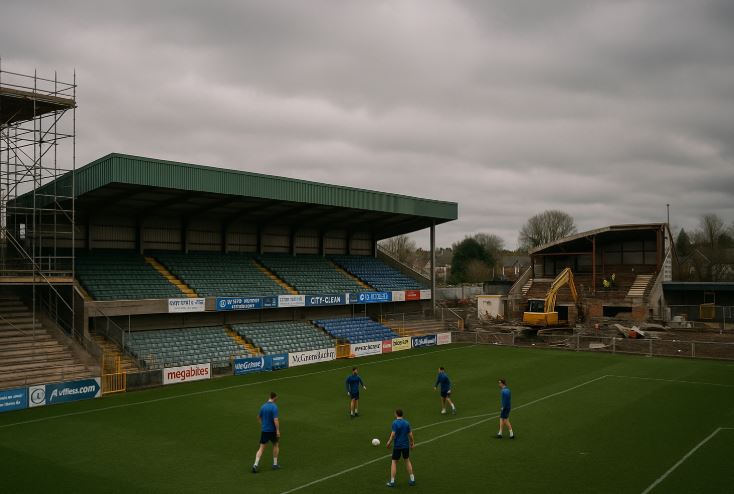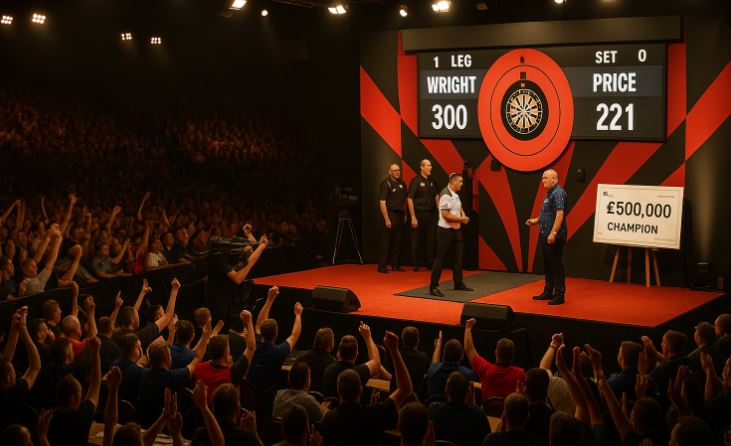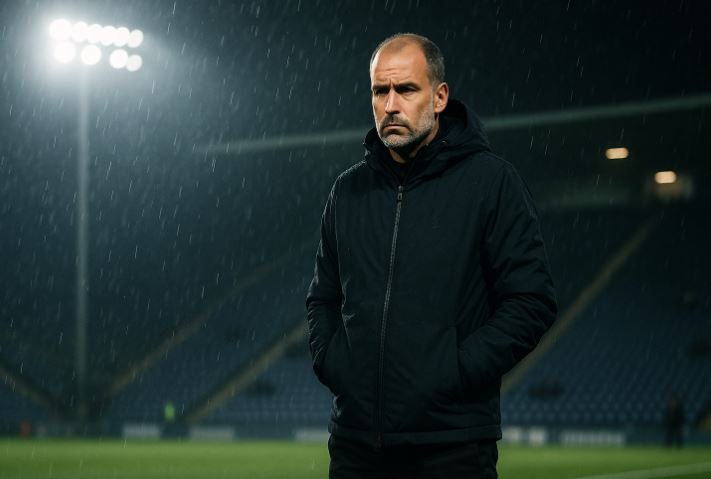For many football clubs in Northern Ireland, 2025 was expected to be a turning point. After more than a decade of anticipation, discussions, and delays, the Northern Ireland Football Fund finally came to life.
But while the headlines celebrated the long-awaited investment in domestic football infrastructure, the reality was far more complex.
The recent funding announcement sparked excitement for some clubs and bitter disappointment for others.
From Cliftonville and Glentoran’s multi-million-pound wins to Coleraine and Derry City’s surprise omissions, the response from the footballing community has been mixed.
This blog dives deep into the Northern Ireland Football Fund, shedding light on its origins, structure, successful and unsuccessful applicants, and what it means for the future of football in Northern Ireland.
What Is the Northern Ireland Football Fund?

The Northern Ireland Football Fund is a major investment initiative launched by the Northern Ireland Executive, aimed at improving football facilities across the country.
It focuses on enhancing the infrastructure for clubs competing at various levels, from elite professional teams to grassroots organisations.
Background of the Fund
Initially announced in 2011 under the name sub-regional stadia funding, the project was designed to complete a triad of sporting investments that previously benefited rugby and GAA. While Windsor Park and Ravenhill saw significant redevelopment through government support, domestic football clubs were left waiting.
Years of political instability and budgetary constraints delayed the football-specific portion of the funding. It wasn’t until January 2025 that formal applications opened, and eligible clubs could finally bid for a share of the £36.2 million allocated.
Purpose and Vision
The fund aims to support clubs in:
- Redeveloping or building stadiums
- Enhancing community engagement
- Meeting safety and accessibility standards
- Providing better facilities for women’s and youth football
It also has a long-term goal of establishing a National Football Centre at Galgorm, which will serve as a hub for player development and coaching excellence.
Why Was the Northern Ireland Football Fund Created?
The idea of the fund was born out of a pressing need. Football clubs across Northern Ireland have historically struggled with outdated infrastructure, limited resources, and unequal investment compared to other sports.
Political and Sporting Context
The absence of dedicated funding for domestic football became increasingly difficult to ignore as:
- Rugby and GAA facilities advanced significantly
- Club-level football suffered from declining infrastructure
- Costs for capital projects continued to rise
When Casement Park was earmarked for redevelopment and Windsor Park completed its upgrades, football clubs asked: What about us?
After public outcry and political lobbying, the NI Executive recognised the urgent need for a dedicated fund. But due to Stormont collapses and budget revisions, the fund was only finalised more than a decade later.
Key Drivers Behind the Fund
- Community Benefit: Football remains the most participated sport in Northern Ireland. Improving stadiums means improving local engagement.
- Economic Growth: Updated venues can host events and boost local economies.
- Equality in Sport: The fund also includes support for the Women’s Premiership and League of Ireland club Derry City, acknowledging the broad impact of football.
Who Are the Successful Clubs in the NI Football Fund?

After a rigorous application process, 20 clubs were selected to move on to the next stage. These clubs were divided into three tiers based on their project value and funding requested.
Tiered Breakdown of Successful Applicants
| Tier | Funding Range | Successful Clubs |
| Tier 1 | Less than £1.5 million | Armagh City, Ballymacash Sports Academy, Lisburn Distillery, Queen’s University, Rathfriland Rangers |
| Tier 2 | £1.5 million to £6 million | Ballinamallard United, Ballymena United, Banbridge Town, Bangor, Carrick Rangers, Dergview, Dungannon Swifts, Glenavon, Larne, Lisburn Rangers, Loughgall, Newry City, Oxford Sunnyside |
| Tier 3 | More than £6 million | Cliftonville, Glentoran |
Cliftonville and Glentoran: The Big Winners
These two clubs received approval to progress at the highest funding level. Each club applied for more than £6 million:
- Cliftonville plans to upgrade Solitude to meet modern standards
- Glentoran aims to redevelop the historic BetMcLean Oval
Their success has been attributed to the quality and scale of their proposals, strong community impact plans, and long-standing contributions to NI football.
How Is the NI Football Fund Structured Across Tiers?
The fund was designed with a tiered approach to ensure fair and proportionate distribution of funds. This structure allowed clubs of varying sizes and resources to apply for funding appropriate to their project scope.
Funding Tiers Explained
Tier 1: Community-Level Projects
- Funding cap: £1.5 million
- Focused on smaller clubs or minor infrastructure upgrades
- Requires clubs to contribute at least 5% of total project cost
Tier 2: Mid-Level Stadium Redevelopments
- Funding range: £1.5 to £6 million
- Medium-sized clubs aiming for more substantial developments
- Still required to co-finance projects
Tier 3: Large-Scale Stadium Projects
- Minimum funding: £6 million
- Reserved for flagship redevelopment projects
- Includes strict evaluation of sustainability, feasibility, and community value
Evaluation Criteria
Applications were assessed on:
- Footballing need
- Community benefit
- Financial sustainability
- Project feasibility
Projects with high impact and readiness received priority, but funding approval is not a guarantee of full financial disbursement. Each club must now pass the Due Diligence stage.
Which Clubs Missed Out on the Football Fund – And Why?
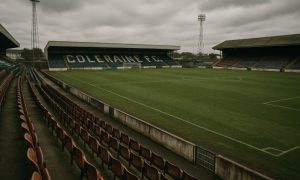
The exclusion of certain well-known clubs from the list of successful applicants came as a surprise to many fans and stakeholders.
Notable Clubs That Missed Out
- Coleraine
- Derry City
- Institute
- Limavady United
- Crusaders
- Portadown
- Ards
- Linfield (did not apply)
Despite their stature and development efforts, these clubs were not included in the initial list of 20. Their absence raised concerns about the geographic and political balance of the funding decisions.
Reaction From Club Officials
Ruairdhri Higgins, Coleraine manager and former Derry City boss, expressed frustration:
“Geographically, for me, the north west has been shafted again.”
Bill Anderson, chairman of Institute FC, added:
“It’s hard to get your head around. I’m very disappointed and it will take a while to process.”
Institute, in particular, had applied for £14 million to build a new stadium after losing their previous ground to flooding in 2017.
What Has Been the Reaction to the Funding Results?
The response from the footballing community has been mixed. While some clubs celebrated, others voiced deep concerns.
Praise From Government and Supporters
Communities Minister Gordon Lyons acknowledged the hard work and ambition shown by applicants:
“These clubs, big and small, from across Northern Ireland have impressed with their plans to improve facilities for the game and for local communities.”
He also emphasised that this is not the end:
“There will be good news for the clubs that are moving forward, but for those that weren’t successful at this stage, there is still hope.”
Frustration and Calls for Transparency
Unsuccessful applicants have called for clearer transparency in the selection criteria and further rounds of funding.
Some have raised issues around:
- Lack of regional balance
- Disproportionate emphasis on certain clubs
- Inadequate weight given to prior development efforts
Despite the criticism, there is cautious optimism that future announcements under the Grassroots Facilities strand may offer another chance.
What Does the Due Diligence Process Involve?
Moving to the next stage does not guarantee immediate access to funds. Clubs that passed the first phase must now undergo Due Diligence.
Key Elements of Due Diligence
- Financial Verification: Clubs must show they can manage the funds effectively
- Legal Compliance: Ensures ownership, leases, and planning permissions are in place
- Feasibility Study: Evaluates if the project can be delivered within budget and timelines
- Community Engagement: Reviews the social value and outreach aspects of the project
Timeframe and Next Steps
Minister Lyons has not provided a strict timeline for when funds will be released. Each project will be evaluated individually, and only after passing this stage will funds be allocated.
How Much Funding Was Requested vs What Was Available?
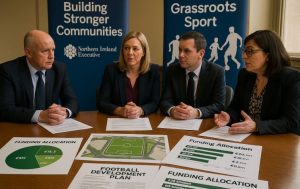
The funding process revealed a significant gap between demand and available resources.
Key Financial Figures
- Total fund available: £36.2 million
- Total requested by clubs: Over £167 million
- Total cost of the 20 selected projects: Just over £82 million
- Estimated overall cost of projects: £98 million
This mismatch has made it clear that many clubs will either:
- Receive less than they applied for
- Wait for future funding announcements
- Seek alternative sources like borrowing or private investment
What Comes Next for Rejected Football Fund Applicants?
For clubs not on the list, the journey isn’t over.
Ministerial Assurance
Gordon Lyons stated:
“Those not in the prioritised cohort could be brought to the next stage if more funding is made available in the future.”
Unsuccessful clubs are encouraged to:
- Refine their applications
- Address gaps identified in feedback
- Prepare for possible future funding under the Grassroots Facilities strand
Hope for Future Funding
With additional financial contributions from councils, private sector partners, or government borrowing, more clubs could be brought back into consideration.
How Will the NI Football Fund Impact Local Communities?
Beyond the stadium upgrades and shiny new facilities, the ultimate goal of the NI Football Fund is to uplift local communities.
Community Benefits
- Improved access to sports for young people
- Safer and more modern venues for fans
- Opportunities for local employment and volunteering
- Increased tourism and economic development in football towns
The redevelopment projects have been evaluated not just as sports investments, but as community infrastructure capable of long-term social returns.
Conclusion
The Northern Ireland Football Fund represents a major milestone in the development of local football. It brings long-awaited hope to clubs that have waited years for infrastructural support. But it also shines a light on the continuing challenges faced by the footballing community in Northern Ireland.
Still, the announcement is not the end. For those who missed out, there is still opportunity in the due diligence phase, future announcements, and additional funding streams. For the successful, the work is just beginning. Projects must be delivered with transparency, efficiency, and measurable community impact.
Football in Northern Ireland has taken a significant step forward. The journey continues, and how it unfolds will depend on collaboration, continued investment, and a shared vision for the future of the game.
FAQs
How many clubs applied and how many were successful?
Out of 38 applicants (37 individual applications), 20 clubs were successful in progressing to the next stage of the funding process.
Which clubs received the highest funding?
Cliftonville and Glentoran were the only two clubs approved under Tier 3, meaning they will receive more than £6 million each, pending due diligence.
Why did Derry City and Coleraine not receive funding?
Despite their development efforts, both clubs were not included in the list of successful applicants.
What does the due diligence process involve?
It includes verifying the club’s financial health, legal readiness, project feasibility, and community impact before any funds are disbursed.
Will there be more funding opportunities in the future?
Yes, future announcements will include funding under the Grassroots Facilities strand, and there’s hope for additional budget allocations through other governmental or private channels.

